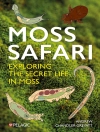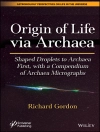This book explores the medical importance of Enterococcus faecium, Staphylococcus aureus, Klebsiella pneumoniae, Acinetobacter baumannii, Pseudomonas aeruginosa, and Enterobacter spp. (ESKAPE) pathogens, and the challenges posed by antibiotic resistance. It covers the antibiotic resistance profile and detection of ESKAPE pathogens, as well as the mechanistic understanding of antibiotic resistance in these pathogens. The book discusses standard microbiological techniques, including staining, morphological and cultural characteristics, biochemical properties, and serotyping, as well as nucleic acid amplification and molecular diagnostic techniques for the detection of ESKAPE pathogens. In addition, the book explores biochemical, molecular, and computational techniques for the determination of virulence factors of ESKAPE pathogens. It also examines the synthesis, structure, function, and inhibitors of virulence factors and biofilm componentsin these pathogens. The book explores various strategies for combating ESKAPE pathogens, including antibiotic adjuvants and their synergistic activity, phytochemicals as potential antibacterial agents, photodynamic therapy, antimicrobial peptides and antibacterial antibodies, antimicrobial activity of Nanomaterials and Nanocomposites, and bacteriophage therapy. Finally, the book discusses in silico and computational approaches for the inhibition of ESKAPE pathogens. This comprehensive book is of interest to researchers, students, and healthcare professionals interested in the diagnosis, prevention, and treatment of ESKAPE pathogens.
Inhaltsverzeichnis
Chapter 1. Medical Importance of ESKAPE pathogens.- Chapter 2. Antibiotic resistance profile and detection in ESKAPE pathogens.- Chapter 3. Mechanistic understanding of antibiotic resistance in ESKAPE pathogens.- Chapter 4. Standard microbiological techniques (staining, morphological and cultural characteristics, biochemical properties and serotyping) in the detection of ESKAPE pathogens.- Chapter 5. Nucleic acid amplification and molecular diagnostic techniques in the detection of ESKAPE bacterial pathogens.- Chapter 6. Biochemical, Molecular, and Computational Techniques for the Determination of Virulence Factors of ESKAPE Pathogens.- Chapter 7. Enterococcus faecium virulence factors and biofilm components: synthesis, structure, function and inhibitors.- Chapter 8. Staphylococcus aureus virulence factors and biofilm components: Synthesis, Structure, Function, and Inhibitors.- Chapter 9. Klebsiella pneumoniae virulence factors and biofilm components: Synthesis, Structure, Functionand Inhibitors.- Chapter 10. Acinetobacter baumannii virulence factors and biofilm components: Synthesis, Structure, Function and Inhibitors.- Chapter 11. Pseudomonas aeruginosa virulence factors and biofilm components: synthesis, structure, function and inhibitors.- Chapter 12. Enterobacter spp. virulence factors and biofilm components: Synthesis, Structure, Function and Inhibitors.- Chapter 13. Antibiotic adjuvants and their synergistic activity against ESKAPE pathogens.- Chapter 14. Phytochemicals as Potential Antibacterial Agents against ESKAPE Pathogens.- Chapter 15. Applications of photodynamic therapy for the eradication of ESKAPE pathogens.- Chapter 16. Antimicrobial peptides and antibacterial antibodies for the elimination of ESKAPE pathogens.- Chapter 17. Antimicrobial activity of Nanomaterials and Nanocomposites against ESKAPE pathogens.- Chapter 18. Bacteriophage therapy to combat ESKAPE pathogens.- Chapter 19. Computational Approaches for the Inhibition of ESKAPE Pathogens.
Über den Autor
Dr. Siddhardha Busi, Ph.D. is Assistant Professor in the Department of Microbiology, Pondicherry University, Puducherry, India. He has more than 12 years of research experience in the field of Microbiology, Microbial Pathogenesis, Antimicrobial drug discovery and Nanobiotechnology. He is working on antimicrobial compounds and antimicrobial drug discovery especially to understand their mechanism of action. He worked at Biology Division, CSIR-IICT, Hyderabad, India for his doctoral studies (Ph.D). He completed two research projects on antiquorum sensing and antibiofilm activities of natural products, funded by Government of India. He is extensively working in the field of Microbial Pathogenesis, Host-Pathogen interactions, Antibiotic resistance, nanotechnology, especially applications of nanotechnology in drug discovery, drug delivery, sustained release and photodynamic therapy. Currently his group is working on Bacterial quorum sensing, Biofilms, Antimicrobial photodynamic therapy and nanobiotechnology. He is editorial board member of several reputed journals. He has also published more than 80 research articles in the peer-reviewed international journals and authored or co-authored numerous book chapters. He edited four books. He is a member of many national and international scientific societies. He has more than 12 years of teaching and research experience at the University level.
Ram Prasad, Ph.D. is Associate Professor, Department of Botany, Mahatma Gandhi Central University, Motihari, Bihar, India. His research interest includes applied & environmental microbiology, plant-microbe-interactions, sustainable agriculture, chemistry of biology, and nanobiotechnology. Dr. Prasad has more than two hundred fifty publications to his credit, including research papers, review articles & book chapters and seven patents issued or pending, and edited or authored several books. Dr. Prasad has twelve years of teaching experience and has been awarded the Young Scientist Award & Prof. J.S. Datta Munshi Gold Medal by the International Society for Ecological Communications; Fellow of Biotechnology Research society of India; Fellow of the Society for Applied Biotechnology; the American Cancer Society UICC International Fellowship for Beginning Investigators, USA; Outstanding Scientist Award in the field of Microbiology by Venus International Foundation; BRICPL Science Investigator Award and Research Excellence Award etc. He has been serving as editorial board members: Nanotechnology Reviews; Green Processing and Synthesis; BMC Microbiology; BMC Biotechnology; Current Microbiology; Archives of Microbiology; Annals of Microbiology; Bio Med Research International, IET Nanobiotechnology; Journal of Nanomaterials; Nanotechnology for Environmental Engineering; Journal of Renewable Material; Journal of Agriculture and Food Research; SN Applied Sciences; Agriculture etc., etc. including Series editor of Nanotechnology in the Life Sciences, Springer Nature, USA. Previously, Dr. Prasad served as Assistant Professor at Amity University Uttar Pradesh, India; Visiting Assistant Professor, Whiting School of Engineering, Department of Mechanical Engineering at Johns Hopkins University, Baltimore, United States and Research Associate Professor at School of Environmental Science and Engineering, Sun Yat-sen University, Guangzhou, China.












